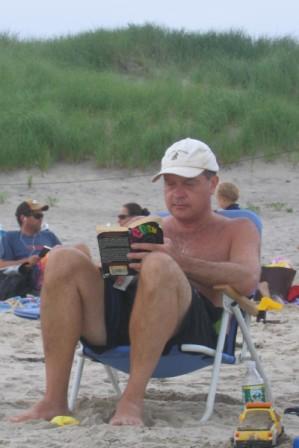Breaking all the rules
The LSO (London Symphony Orchestra) is in town for the next few weeks, doing an all Beethoven program at Lincoln Center. So the two NYC classical stations have been doing all Beethoven all the time, including Beethoven trivia contests and essay competitions on "Why I'm the biggest Beethoven fan in New York". I kid you not. The city is in the grip of a Ludwig mania. Well, a small part of the city.
So why all the fuss, you ask? Because Beethoven's work radically altered the course of classical music. You can get the biographical stuff here.
http://en.wikipedia.org/wiki/Ludwig_van_BeethovenPrior to Beethoven, people listened to work by composers like Mozart and Haydn. The music was pretty, elegant, and cerebral, and was bound by lots of conventions and rules.
Beethoven's music broke all the rules. It was loud. It was long. It changed tempo a lot. He mixed musical metaphors, with a driving, thundering percussive movement instantly transitioning to a mournful, quiet oboe solo. His music was heroic, not intellectual. Sometimes he'd start pieces in a minor key instead of a major key. Musical compositions back then had two themes, or melodies - a primary theme and a counter theme. Beethoven, inventive guy that he was, often threw in four or five themes per work. Or only one, in the last movement. Stuff like this made peoples heads explode back then.
There's story that one of his student's yelled "You came in wrong!" at Beethoven when he was playing a new piece. Beethoven jumped up from the piano, boxed his ears and said "You idiot! Can't you see what I'm trying to do?".
There's more. He had wild hair. He dressed funny. He kept falling in love with women he couldn't have. He was a rock star.
He was also a tragic figure. He started to go deaf when he was just 28. He fell into a deep depression when he realized that his deafness would not only cut him off from the music that was the soul of his being, but that it would probably prevent him from ever marrying. He remained depressed for four years and contemplated suicide. But he eventually decided that rather than giving in, he could go on and use the amazing talent he'd been given. He went on to compose his finest works while completely deaf. He could hear the music in his head, and that's all he needed.
Here's the Beethoven collection on Magnatune:
It's all good, but to really hear what I'm talking about, listen to the Philharmonia Baroque's performance of the Symphony No 3 Eroica, particularly the 2nd and 3rd movements. Listen to the shifting moods, the counter-play between the instruments and feel the power of it as it sweeps you along to the conclusion. This was heavy metal to Haydn's folk tunes.
His work was what brought an end to the baroque period and introduced the romantic period of classical music. Music stopped just thinking and started feeling too.
He was one radical guy.
So listen, enjoy, and be uplifted.



